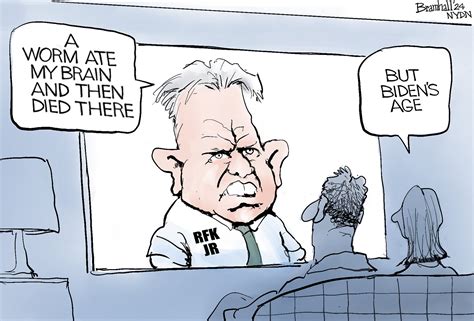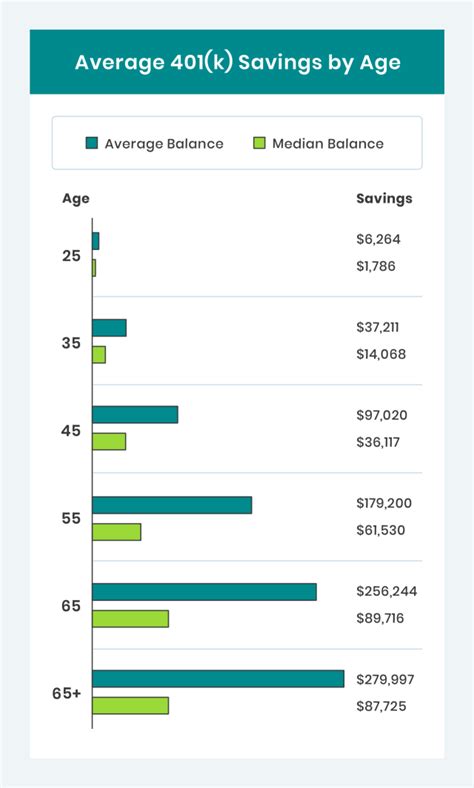
Goldman Sachs analysts are warning investors to prepare for a potential resurgence of inflation, citing persistent pricing pressures and a resilient U.S. economy that could prompt the Federal Reserve to maintain its hawkish monetary policy stance for longer than anticipated. The investment bank suggests that the market’s current complacency regarding inflation may be premature, setting the stage for a possible “inflation shock.”
Goldman Sachs has issued a stark warning, suggesting that the market is underestimating the potential for a resurgence of inflation. In a recent note to clients, the firm’s analysts highlighted that resilient economic growth and persistent pricing pressures could force the Federal Reserve to maintain its restrictive monetary policy for an extended period, potentially leading to an “inflation shock” that catches investors off guard. This contradicts the prevailing market sentiment, which largely anticipates a steady decline in inflation and a pivot toward easier monetary policy by the Fed in the coming months.
The investment bank’s assessment is rooted in several key observations. First, the U.S. economy has demonstrated remarkable resilience despite aggressive interest rate hikes implemented by the Federal Reserve over the past year. While many economists initially predicted a recession by mid-2023, the economy has continued to grow, supported by strong consumer spending, a robust labor market, and healthy corporate balance sheets. This continued economic strength, Goldman Sachs argues, is fueling demand and keeping upward pressure on prices.
Second, Goldman Sachs points to persistent pricing pressures in various sectors of the economy. While headline inflation has moderated from its peak in mid-2022, core inflation, which excludes volatile food and energy prices, remains stubbornly high. This suggests that underlying inflationary forces are proving more persistent than initially anticipated. Specific areas of concern include shelter costs, which account for a significant portion of the consumer price index (CPI), and wage growth, which continues to outpace productivity gains. The bank highlights that these factors could prevent inflation from returning to the Federal Reserve’s 2% target as quickly as the market currently expects.
Third, the bank’s analysis suggests that the Federal Reserve may be compelled to maintain its hawkish monetary policy stance for longer than currently priced into the market. The Fed has already raised interest rates aggressively, but if inflation remains elevated and the economy continues to grow, the central bank may need to raise rates further or hold them at current levels for a prolonged period. This would have significant implications for asset prices, as higher interest rates tend to depress stock valuations and increase borrowing costs for businesses and consumers.
The potential for an “inflation shock” stems from the disconnect between the market’s expectations and the reality of persistent inflationary pressures. Many investors are positioned for a scenario in which inflation continues to decline, allowing the Federal Reserve to begin cutting interest rates in the near future. If inflation proves more persistent than expected, these investors could be forced to unwind their positions, leading to a sharp correction in asset prices.
Goldman Sachs’ warning underscores the uncertainty surrounding the inflation outlook and the challenges facing the Federal Reserve. While the central bank has made significant progress in cooling down the economy, the fight against inflation is far from over. Investors need to be prepared for the possibility that inflation could remain elevated for longer than anticipated, requiring a more hawkish response from the Fed and potentially leading to significant market volatility.
The bank’s analysts recommend that investors adopt a more cautious and diversified approach to portfolio construction. This includes reducing exposure to assets that are highly sensitive to interest rate increases, such as growth stocks and long-duration bonds, and increasing allocations to assets that tend to perform well in inflationary environments, such as commodities and real estate. They also suggest that investors consider hedging their portfolios against the risk of rising inflation using inflation-protected securities or other hedging instruments.
Beyond the immediate implications for financial markets, the potential for a resurgence of inflation could also have significant economic consequences. Higher inflation erodes purchasing power, reduces consumer confidence, and can lead to social and political unrest. It also makes it more difficult for businesses to plan and invest, potentially dampening economic growth. The Federal Reserve is keenly aware of these risks and is committed to bringing inflation back to its 2% target, even if it means sacrificing some economic growth in the short term.
The Goldman Sachs’ warning is not an isolated one. Several other prominent economists and financial analysts have also expressed concerns about the persistence of inflation. Some argue that structural factors, such as supply chain disruptions, deglobalization, and demographic shifts, could keep inflation elevated for years to come. Others point to the potential for fiscal policy to exacerbate inflationary pressures, particularly if the government continues to run large budget deficits.
The debate over the inflation outlook is likely to continue for some time, as economists and policymakers grapple with the complex forces shaping the economy. In the meantime, investors need to remain vigilant and be prepared for a range of possible outcomes. The potential for an “inflation shock” is a real risk, and investors who ignore it do so at their own peril.
Detailed Breakdown of Contributing Factors:
The potential for a resurgence in inflation, as highlighted by Goldman Sachs, isn’t a monolithic concern. It’s a confluence of interconnected factors that, if not carefully managed, could reignite inflationary pressures. Understanding these factors is crucial for investors and policymakers alike.
-
Resilient Economic Growth: Contrary to expectations of a significant slowdown or recession, the U.S. economy has demonstrated remarkable resilience. Consumer spending remains strong, fueled by pent-up demand and a healthy labor market. Businesses continue to invest, driven by technological innovation and the need to improve efficiency. This sustained economic activity creates a favorable environment for demand-pull inflation, where increased demand outstrips supply, leading to higher prices. The initial predictions of a recession in 2023 have been largely dismissed, with revised forecasts indicating continued, albeit slower, growth. This unexpected strength allows companies to maintain pricing power and potentially increase prices further.
-
Persistent Pricing Pressures: While headline inflation has decreased from its peak, the underlying inflationary forces remain stubbornly persistent. Core inflation, which excludes volatile food and energy prices, provides a clearer picture of these underlying pressures. Factors contributing to this include:
- Shelter Costs: Housing costs represent a significant portion of the CPI. Rising rents and home prices contribute significantly to overall inflation. Supply shortages in the housing market, coupled with strong demand, continue to drive up shelter costs. While there are signs that rent growth is slowing, the impact on the CPI lags, meaning that shelter inflation could remain elevated for some time.
- Wage Growth: The tight labor market has led to significant wage growth, particularly in lower-paying sectors. While higher wages are beneficial for workers, they also increase businesses’ costs, which can be passed on to consumers in the form of higher prices. The relationship between wage growth and productivity is critical. If wages grow faster than productivity, businesses will face pressure to raise prices to maintain profitability.
- Supply Chain Disruptions: Although significantly improved from the height of the pandemic, supply chain bottlenecks persist in certain sectors. These disruptions lead to shortages of goods and materials, driving up prices. Geopolitical tensions and trade restrictions can further exacerbate these supply chain challenges.
- Service Sector Inflation: Inflation in the service sector has been particularly persistent. This is driven by strong demand for services, such as travel, entertainment, and healthcare, coupled with labor shortages in these industries. Services are less sensitive to interest rate hikes compared to goods, meaning that service sector inflation could prove more difficult to tame.
-
Federal Reserve Policy: The Federal Reserve’s monetary policy decisions will play a crucial role in determining the future path of inflation. The Fed has already raised interest rates aggressively, but the effectiveness of these rate hikes depends on several factors, including:
- The Lag Effect: Monetary policy operates with a lag, meaning that the full impact of interest rate hikes is not felt immediately. It takes time for higher interest rates to work their way through the economy and cool down demand. This lag effect makes it difficult for the Fed to fine-tune its policy, as it must make decisions based on past data while anticipating future economic conditions.
- The Neutral Rate: The neutral rate of interest is the level of interest rates that neither stimulates nor restrains economic growth. The Fed’s goal is to raise interest rates to a level above the neutral rate to cool down inflation. However, estimating the neutral rate is challenging, and the Fed could inadvertently overtighten monetary policy, leading to a recession.
- Quantitative Tightening: In addition to raising interest rates, the Fed is also reducing the size of its balance sheet through quantitative tightening (QT). This involves allowing Treasury securities and mortgage-backed securities to mature without reinvesting the proceeds. QT further tightens monetary policy by reducing the amount of liquidity in the financial system.
-
Market Complacency: Goldman Sachs emphasizes that the market is currently too complacent about the inflation outlook. Many investors are positioned for a scenario in which inflation continues to decline and the Fed begins cutting interest rates in the near future. This complacency could lead to a sharp correction in asset prices if inflation proves more persistent than expected. The market’s expectation of future rate cuts is based on the belief that the Fed will prioritize economic growth over fighting inflation. However, if inflation remains elevated, the Fed may be forced to maintain its hawkish stance, disappointing market expectations.
-
Geopolitical Risks: The global geopolitical landscape presents significant risks to the inflation outlook. The war in Ukraine has disrupted energy markets and supply chains, contributing to higher prices. Tensions between the United States and China could also escalate, leading to trade restrictions and further supply chain disruptions. These geopolitical risks add to the uncertainty surrounding the inflation outlook and could lead to unexpected price increases.
-
Fiscal Policy: While monetary policy is the primary tool for controlling inflation, fiscal policy can also play a role. Government spending and tax policies can influence aggregate demand and impact inflation. Large government deficits can stimulate demand and exacerbate inflationary pressures, particularly if the economy is already operating at full capacity.
Portfolio Strategies for an Inflationary Environment:
Given the potential for a resurgence of inflation, investors need to consider adjusting their portfolios to protect against its adverse effects. Goldman Sachs and other investment firms recommend several strategies:
-
Diversification: Diversification is always a key principle of sound portfolio management, but it is particularly important in an inflationary environment. Diversifying across different asset classes, sectors, and geographic regions can help to mitigate the impact of inflation on overall portfolio returns.
-
Inflation-Protected Securities: Treasury Inflation-Protected Securities (TIPS) are designed to protect investors from inflation. The principal of TIPS is adjusted based on changes in the CPI, providing a hedge against rising prices. TIPS can be a valuable addition to a portfolio in an inflationary environment.
-
Commodities: Commodities, such as oil, gold, and agricultural products, tend to perform well during periods of inflation. This is because commodities are often used as inputs in the production of goods and services, and their prices tend to rise along with overall inflation.
-
Real Estate: Real estate can also provide a hedge against inflation. Rents and property values tend to rise along with inflation, providing a stream of income and potential capital appreciation. However, real estate is also sensitive to interest rate increases, so investors need to consider this factor when allocating to real estate.
-
Value Stocks: Value stocks, which are stocks that are trading at a discount to their intrinsic value, tend to outperform growth stocks during periods of rising interest rates and inflation. This is because value stocks are less sensitive to interest rate increases and are more likely to generate earnings and cash flow in the near term.
-
Short-Duration Bonds: Short-duration bonds are less sensitive to interest rate increases than long-duration bonds. In an environment of rising interest rates, short-duration bonds can provide a more stable source of income and capital preservation.
-
Floating Rate Loans: Floating rate loans have interest rates that adjust periodically based on a benchmark interest rate, such as LIBOR or SOFR. These loans can provide a hedge against rising interest rates, as their interest payments will increase along with interest rates.
-
Reduce Exposure to Growth Stocks: Growth stocks, which are stocks that are expected to grow at a faster rate than the overall market, tend to underperform during periods of rising interest rates and inflation. This is because growth stocks are highly sensitive to interest rate increases, as their valuations are based on future earnings that are discounted at a higher rate.
The Broader Economic Implications:
Beyond the impact on financial markets, a resurgence of inflation could have significant implications for the broader economy.
-
Erosion of Purchasing Power: Higher inflation erodes the purchasing power of consumers, making it more difficult for them to afford goods and services. This can lead to a decline in consumer spending, which is a major driver of economic growth.
-
Reduced Consumer Confidence: High inflation can also reduce consumer confidence, as people become more pessimistic about the future. This can lead to further declines in consumer spending and investment.
-
Social and Political Unrest: High inflation can lead to social and political unrest, as people become frustrated with the rising cost of living. This can create instability and make it more difficult for policymakers to manage the economy.
-
Impact on Businesses: High inflation makes it more difficult for businesses to plan and invest. It creates uncertainty about future costs and revenues, which can lead to lower investment and slower economic growth. Businesses may also be forced to raise prices, which can further exacerbate inflationary pressures.
-
Impact on Monetary Policy: A resurgence of inflation would force the Federal Reserve to maintain its hawkish monetary policy stance, potentially leading to higher interest rates and slower economic growth. The Fed may be forced to choose between fighting inflation and supporting economic growth, which is a difficult trade-off.
-
Impact on Government Debt: High inflation can erode the real value of government debt, making it easier for the government to repay its obligations. However, high inflation can also lead to higher interest rates, which can increase the cost of borrowing for the government.
-
Global Implications: Inflation is not just a domestic issue. It can also have significant implications for the global economy. High inflation in the United States can lead to a stronger dollar, which can make it more difficult for other countries to compete. It can also lead to trade tensions and financial instability.
The Goldman Sachs’ warning serves as a reminder that the fight against inflation is far from over. While progress has been made, the potential for a resurgence of inflation remains a real risk. Investors and policymakers need to remain vigilant and be prepared for a range of possible outcomes.
FAQ Section:
1. What is an “inflation shock” according to Goldman Sachs?
An “inflation shock,” according to Goldman Sachs, is a scenario where inflation proves to be more persistent and higher than what the market is currently expecting. This could lead to a sudden and significant repricing of assets as investors adjust their expectations for future interest rates and economic growth. It implies that the market is currently underestimating the potential for inflation to remain elevated, potentially leading to a surprise and negative impact on investments when the reality of persistent inflation becomes apparent.
2. What are the main reasons Goldman Sachs believes an “inflation shock” is possible?
Goldman Sachs cites three primary reasons:
- Resilient U.S. economic growth is keeping demand strong and putting upward pressure on prices.
- Persistent pricing pressures, especially in core inflation components like shelter and wages, suggest underlying inflationary forces are stronger than anticipated.
- The Federal Reserve may be forced to maintain its hawkish monetary policy (high interest rates) for longer than the market expects if inflation doesn’t subside quickly enough.
3. What does Goldman Sachs recommend investors do to prepare for a potential “inflation shock”?
Goldman Sachs suggests a cautious and diversified approach:
- Reduce exposure to interest-rate-sensitive assets like growth stocks and long-duration bonds.
- Increase allocations to assets that tend to perform well in inflationary environments, such as commodities, real estate, and value stocks.
- Consider hedging portfolios against rising inflation using inflation-protected securities (TIPS) or other hedging instruments.
4. How does core inflation differ from headline inflation, and why is it important?
Headline inflation includes all goods and services in the Consumer Price Index (CPI), including volatile components like food and energy. Core inflation excludes these volatile components, providing a clearer picture of underlying inflationary trends. It’s important because it helps policymakers and economists assess the persistence of inflation and make more informed decisions about monetary policy. Persistently high core inflation suggests that inflationary pressures are deeply embedded in the economy and may require more aggressive policy responses.
5. What potential economic consequences could result from a resurgence of inflation?
A resurgence of inflation could have several negative economic consequences:
- Erosion of purchasing power for consumers, leading to reduced spending.
- Reduced consumer confidence, further dampening economic activity.
- Increased pressure on businesses to raise prices, potentially leading to a wage-price spiral.
- The Federal Reserve might be forced to continue raising interest rates, potentially triggering a recession.
- Potential for social and political unrest due to the rising cost of living.
The above content provides an exhaustive and in-depth analysis of the original article.









